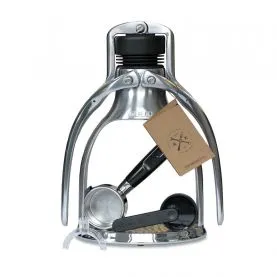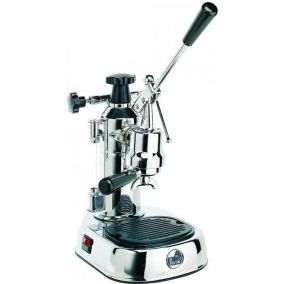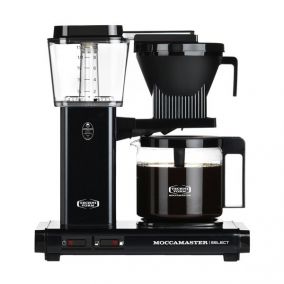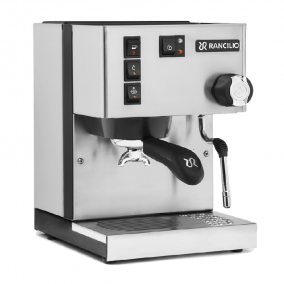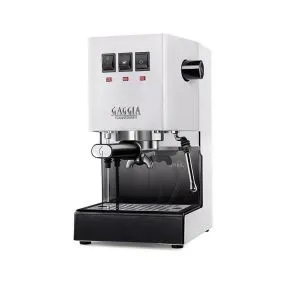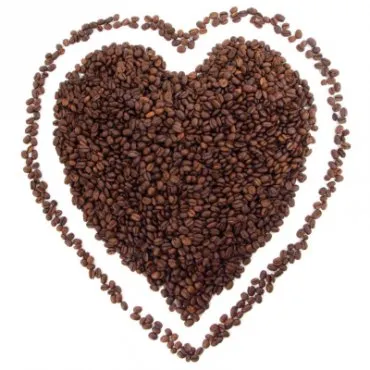
This article aims to clarify the basic issues of espresso coffee machines and their operation, given that there are many myths and ambiguities in this area. Today's market is crowded with many coffee makers. There are ads running on how to make coffee at home like from an Italian cafe, manufacturers are competing in what the coffee machine can do on its own. Their common feature is also that they are sold mainly in consumer electronics stores, whether in shopping malls or in large e-shops, where you can buy dog food, washing powder and the best coffee maker in one place.
Unfortunately, you will not find a real espresso coffee machine there . As? And how to know it?
What is espresso?
We have to start by defining what an espresso is. Espresso is a drink made of about 7-8 g of coffee with a volume of about 25 ml , which is created by the flow of water under pressure through the lever of the coffee machine in about 30 seconds . This is very important, nothing else is espresso. Unfortunately, 90% of consumer coffee machines on the market cannot do this, so you will never taste coffee as you would from the right cafe. Of these parameters, the size of the coffee cups and the extraction time are particularly important.
The size of an espresso cup
Yes, proper espresso is really a small cup of coffee, but what if you like a big one? How do they do it in a good cafe? The coffee is not prepared there in such a way that the 150-200 ml of water passes through the coffee lever, but about 25 ml of espresso is made and the rest is topped up with hot water. The difference in taste will be huge. And now back to consumer coffee makers. They will make the bigger coffee (for example americano) just like that just as much water flows through the coffee as you choose, and that's it.
Consumer coffee makers make coffee with a larger volume bad. This is especially bad because not only the final taste will be bad, but long extraction also yields substances from fresh coffee that can cause stomach acidification. Simply substances that you do not want in coffee, and therefore it is always necessary to follow the correct recipes for making coffee.
Extraction time vs. cup size
So we know that the time should be 30 seconds, but how does it happen? Many people might think that there is a timer in the coffee machine and it simply switches it off after 30 seconds and discharges only 25 ml of coffee during those 30 seconds. This is not the case. Espresso is a much simpler tool. Water comes out of the coffee machine under pressure, ground coffee resists and coffee flows out.
And precisely by the roughness of grinding and quantitythe amount of coffee in the lever is created over time. This cannot be calculated in any way, it just has to be tried and tried in a few attempts to find the right coarseness of grinding coffee. It is a very sensitive process, where hundreds of grams and very small differences in grinding play a role. For example, on a scale of 1-40 on the grinder can make a difference between 1 degree and 8 ml of drink, so you need very precise and sensitive, ie professional grinders.
Why can't ordinary coffee machines do this? It is not that easy.
Now it is clear to everyone that from the principle of how ordinary coffee machines work (ie you press the sensor and some volume of coffee flows out) it is not possible to achieve the right espresso from them. It is a process of trial and error, and the coffee machine would have to prepare several drinks himself before it could be calibrated. And this is how coffee machines from regular stores do not work.
Consumer espresso coffee machines do not work with the parameter of time and coarseness of coffee , they take into account only the volume and weight. They are also designed to make any ground coffee a coffee drink. In order for this to happen, the coffee does not resist and its coarseness is ground, but the bowls themselves in the lever of the coffee machine, and so the consumer can easily put coarsely ground coffee in the lever, it somehow flows. The coffee is watery, tasteless and body-free, but a coffee drink was created. But it can never taste like coffee from a good cafe.
Why does an espresso require a quality coffee grinder?
From everything we have outlined above, it is clear that everything revolves around grinding coffee. But how good should a coffee grinder be? Unfortunately, there are not many compromises that can be made here, although we are sure that many of you will try. We understand that. It is often necessary to go through this process. The grinder is expensive, you want to try it differently, but over time you will find that it is a waste of time and you will buy a quality grinder .
It is necessary for the grinder to have a sufficiently precise setting of roughness , ie at least 40 steps between the roughness of frenchpress and jazz, here we start from the personal experience with Baratza Sette 270 , where the basic is 40 degrees. To give you an idea, if I have the same volume of cup and the same amount of coffee, then the difference in the form of 1 degree of coarseness of grinding will give rise to coffee with a volume of about 5 ml larger, ie 20% of the volume of cups. That's quite enough. And it might seem that 40 degrees is a lot. Thus, a quality espresso grinder should have even greater sensitivity, ie more degrees of grinding.
Do you need a real espresso coffee machine, or actually another one?
This is a good question. If you are looking for a coffee machine that will make a cup of coffee as easy as possible without you, then don't buy a real lever espresso . A quality lever espresso will open up a whole new world of coffee and taste, but it's a craft, it requires enthusiasm and a little sacrifice before you set up and adjust your coffee machine. Nothing is free here, this is the basic rule of espresso, nothing happens here on its own, everything is in your hands, the coffee machine just pushes water over the lever.
If you want an automatic coffee machine and you also like more coffee than a small espresso, a coffee machine for filtered coffee is an excellent choice for you. These coffee machines work fully automatically, you pour water into them, insert a paper filter with ground coffee, turn it on and after a while the coffee is ready. The preparation of coffee is immediate, the whole process does not take more than a few minutes.
Filtered coffee as an alternative to espresso?
Filtered coffee has enormous advantages in that it naturally has a larger volume, ie compared to commercial coffee machines, where 150 ml of water coffee flows under pressure.
Another advantage of filtered coffee machines is their tolerance to the coarseness of grinding. Any grinder is enough for grinding for filtered coffee.
This coffee machine has long been an absolute Italian legend in coffee preparation. The classic design dating back to 1950 and the unmistakable coffee brewing process is what continues to win over customers today. This product is NOT in stock in our shop.
This coffee machine has long been an absolute Italian legend in coffee preparation. The classic design dating back to 1950 and the unmistakable coffee brewing process is what continues to win over customers today.
This product is NOT in stock in our shop.
Thelegendary Technivorm Moccamaster KBGhome coffee machine is suitable for brewing up to 1.25l of perfect filter coffee. The new KBG Select version allows you to choose between 6 or 10 cups.
Thelegendary Technivorm Moccamaster KBGhome coffee machine is suitable for brewing up to 1.25l of perfect filter coffee. The new KBG Select version allows you to choose between 6 or 10 cups.
Version 2020. The Silvia E home espresso lever espresso machine stands out above all for its low price, which contrasts with the quality of the design, which in many respects is comparable to professional machines that are many times more expensive. Made in Italy.
Version 2020. The Silvia E home espresso lever espresso machine stands out above all for its low price, which contrasts with the quality of the design, which in many respects is comparable to professional machines that are many times more expensive. Made in Italy.
Gaggia Classic in a new design for everyone who wants to enjoy the perfect Italian espresso in the comfort of their home.
Gaggia Classic in a new design for everyone who wants to enjoy the perfect Italian espresso in the comfort of their home.
Coffee machine La Pavoni Europiccola Lusso EL
Moccamaster KBG Select BLACK
Coffee machine Rancilio Silvia E
Lever coffee machine GAGGIA New Classic Plus



























































































